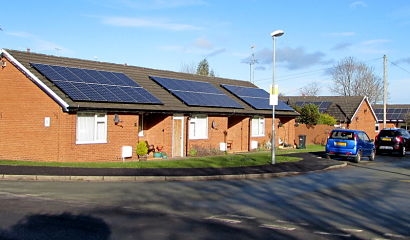WOBO thanks Robin Whitlock and Renewable Energy magazine for the link to developments in solar technology.
Scientists at the University of Manchester have found a way to accelerate the uptake of solar technology, by increasing the environmental safety of perovskite solar cells.

Perovskite solar cells have attracted interest because, unlike silicon solar cells, they can be mass produced through roll-to-roll processing. Additionally, they are light and colourful, with the versatility to be used in non-traditional settings such as windows and contoured roofs. However, up until now, application has been impacted by potential environmental risks. Perovskite solar cells contain lead, a cumulative toxin, and if the cells get damaged, lead ions may leak.
Taking lessons from nature, Professor Brian Saunders and Dr David Lewis have devised a way to eliminate the lead release from broken cells. Using a bioinspired mineral called hydroxyapatite, a major constituent of human bone, they have created a ‘failsafe’ which captures the lead ions in an inorganic matrix. As a result, if cells are damaged, toxins are stored in an inert mineral, rather than released into the environment.
In a dual success, The Engineering and Physical Sciences Research Council (EPSRC)-funded project found that through the addition of hydroxyapatite, the efficiency of perovskite solar cell increased to around 21 percent. This compares to around 18 percent efficiency for control cells with no added hydroxyapatite. An increased efficiency in panels means more energy can be generated and at a lower cost.
The research team hope that the cells will bring forward the large-scale application of perovskite solar cell technology.
